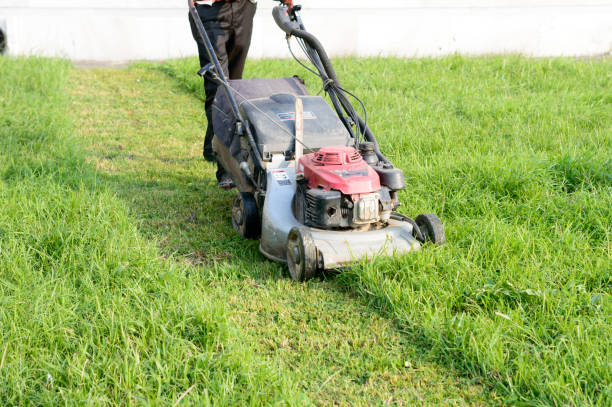Introduction
Are you considering a landscaping project and wondering, "What is a sod cutter?" Well, you're in the right place. Sod cutters are essential tools for anyone looking to transform their outdoor spaces. In this article, we'll dive deep into the world of sod cutters, exploring their uses, benefits, and much more. So, let's get started with this informative guide!
What is a Sod Cutter?
A sod cutter is a powerful landscaping tool designed to remove sections of turf or sod with precision and ease. This machine helps you achieve a clean and neat finish, whether you're working on a small garden or a large lawn. Here are some key aspects to understand about sod cutters:
Types of Sod Cutters
Sod cutters come in various types, each suited for specific applications. The main categories include:
Manual Sod Cutter: This is a basic, hand-operated tool for smaller projects.
Gas-Powered Sod Cutter: Ideal for larger areas, it runs on gasoline and provides more power.
Electric Sod Cutter: Quieter and environmentally friendly, it's great for smaller residential projects.
How Does a Sod Cutter Work?
A sod cutter features a sharp cutting blade that penetrates the soil and severs the roots of the grass. As you push or walk behind the machine, it lifts and rolls up the strips of sod, making it easy to remove and dispose of.
Common Uses of Sod Cutters
Lawn Renovation: When you want to replace an existing lawn with a new one, a sod cutter can help you remove the old grass efficiently.
Garden Bed Creation: Sod cutters are handy for creating garden beds or pathways in your yard.
Landscaping Projects: Professionals often use sod cutters to prepare the ground for landscape installations, such as installing irrigation systems or laying pavers.
Grass Removal: If you need to clear a portion of your lawn for other purposes, a sod cutter can make the task quick and easy.
Resodding: When your existing lawn has patchy or unhealthy areas, you can use a sod cutter to remove the problematic sections and lay down fresh sod.
Advantages of Using a Sod Cutter
Time-Saving: Sod cutters can significantly reduce the time and effort required for manual sod removal.
Precision: These machines provide precise cutting, ensuring a clean and even result.
Less Physical Strain: Using a sod cutter is less physically demanding compared to manual sod removal methods.
Improved Grass Health: When resodding, a sod cutter removes old, unhealthy grass, promoting better growth for the new sod.
FAQs (Frequently Asked Questions)
What is the best time to use a sod cutter?
The best time to use a sod cutter is during the early spring or late summer when the grass is actively growing. This ensures that the new sod you lay down has optimal conditions for establishment.
Can I rent a sod cutter?
Yes, you can! Many equipment rental companies offer sod cutters for rent, making it convenient and cost-effective for homeowners and landscapers.
How deep does a sod cutter cut?
The cutting depth of a sod cutter can be adjusted, but typically, it can cut between 1 to 2.5 inches deep.
Do I need any special training to operate a sod cutter?
While operating a sod cutter is relatively straightforward, it's essential to read the user manual and take necessary safety precautions. If you're unsure, consider seeking guidance from a professional.
Can I reuse the removed sod?
Yes, you can reuse the removed sod in other areas of your lawn or yard, provided it's still healthy and in good condition.
Are there any safety precautions I should take when using a sod cutter?
Safety first! Always wear protective gear, including safety glasses and ear protection, when operating a sod cutter. Additionally, be cautious when working on slopes or uneven terrain.
Conclusion
Now that you've gained a comprehensive understanding of what a sod cutter is and how it can enhance your landscaping projects, you're ready to tackle your next outdoor endeavor with confidence. Remember to prioritize safety, follow the manufacturer's instructions, and enjoy the convenience and precision that a sod cutter brings to your landscaping tasks.

Comments
Post a Comment